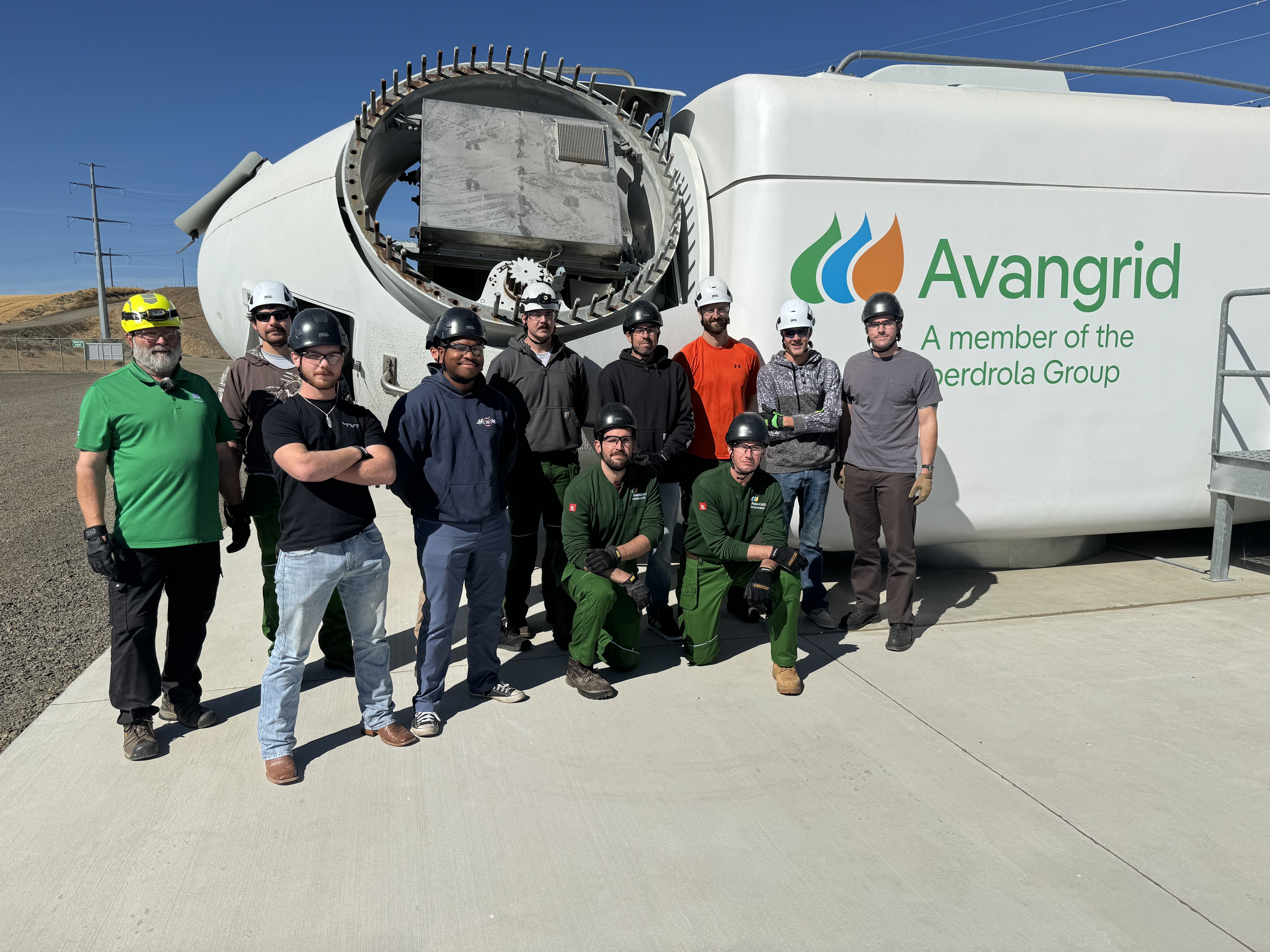
The first new wind technicians to pass through Avangrid's National Training Center in Sherman County, Oregon.
Courtesy of Avangrid
When Juan Flores started his first job fixing wind turbines 14 years ago, he wished he’d had more training. On one of his first days on the job, he had to climb a 90-meter ladder. But no one told him to take breaks.
“I climbed all the way up to the top without stopping. I think I rested on the ladder for maybe one minute. So when I got up there, I almost passed out. I was gasping for air,” Flores said.
That’s when he got the advice to take breaks on the ladder.
Now, Flores is helping new technicians avoid similar pitfalls. He’s helping train them at Avangrid’s newly built National Training Center in Sherman County, Oregon. The facility was built this summer and just worked with its first set of technicians.
This September, Flores taught 10 students about the electrics, mechanics and hydraulics of wind turbines.
“It gives the technicians confidence, and they feel safer that they have done it before, and they’re only going to be doing the same job again,” he said.
Related: Federal agency announces next steps for Southern Oregon offshore wind energy
In this inaugural training class, technicians came from around the country. Flores said training new technicians in safety and problems they might encounter on the job is important — more and more people are signing up to join the industry.
In 2023, clean energy jobs increased more than twice the rate of the jobs in the overall U.S. economy, according to the U.S. Department of Energy.
That growth may only increase. According to the U.S. Bureau of Labor Statistics, wind technician jobs are expected to grow by 60% from 2023 to 2033, making it one of the fastest growing employment opportunities around.
“I was born and raised working on motors, mechanic stuff,” said Karsen Coats, a new wind technician at Avangrid’s Barton Chapel wind farm in Texas, in a news release. “Looking to my future, I wanted something that would be a good career path. I saw a lot of opportunities moving into wind, and I feel like I was capable of moving up.”
Related: 5 companies set to bid on Southern Oregon offshore wind leases
The training center features a “fall protection tower,” where technicians can practice rappelling from 30 feet high, and a virtual reality training room, where they can learn how to troubleshoot common problems they might encounter while fixing wind turbines.
In one class, Flores said he had the trainees draw an electrical circuit. Then, they made the circuit work in the virtual reality room.
“They continued for 30 minutes after that. I was just watching them. They were building even more circuits. They kept making them more complicated, and I’m like, ‘You guys are doing great. Keep going,’ until it was time to go. We got more lessons to go through,” Flores said.
More complicated training modules will eventually be helpful to intermediate and advanced technicians, he said.
Flores said the program will train new technicians at least every few months.
This story comes to you from the Northwest News Network, a collaboration between public media organizations in Oregon and Washington.

